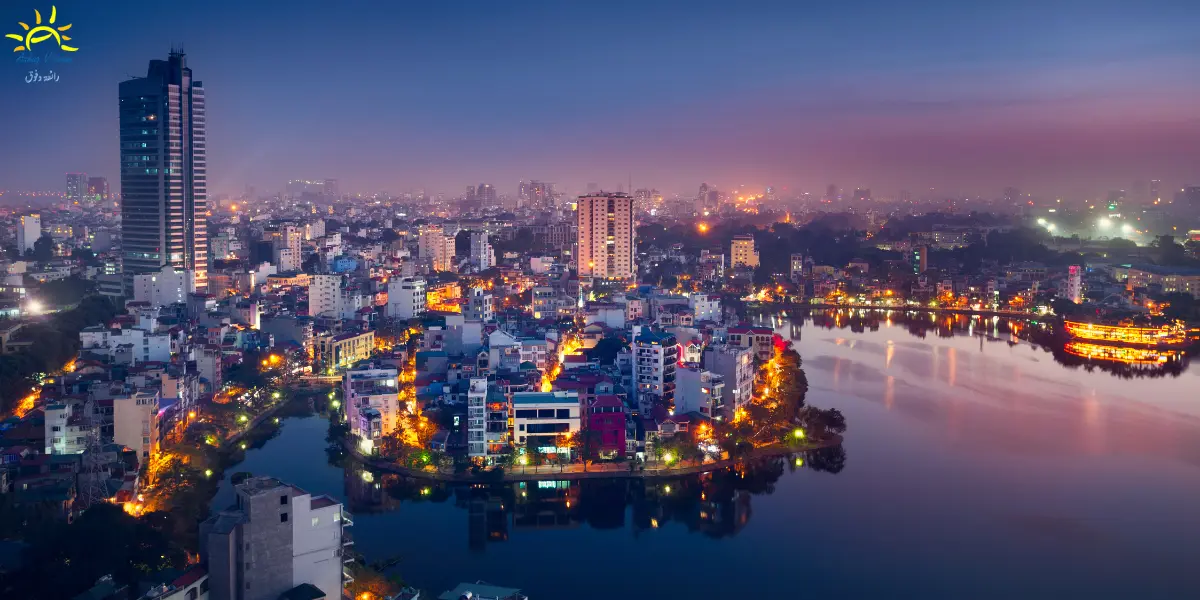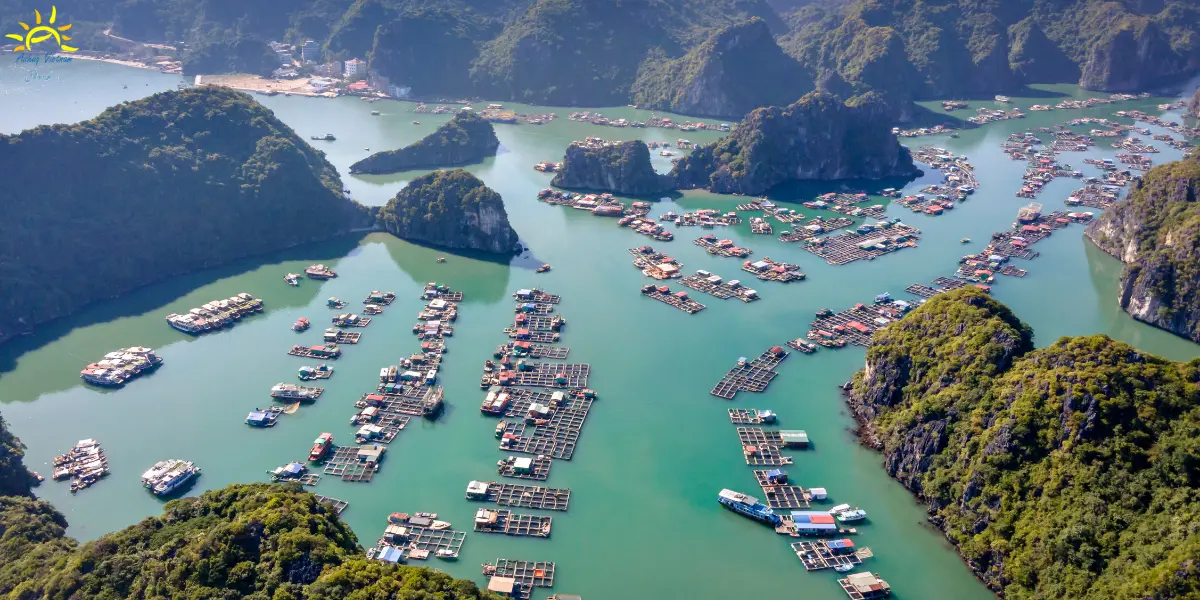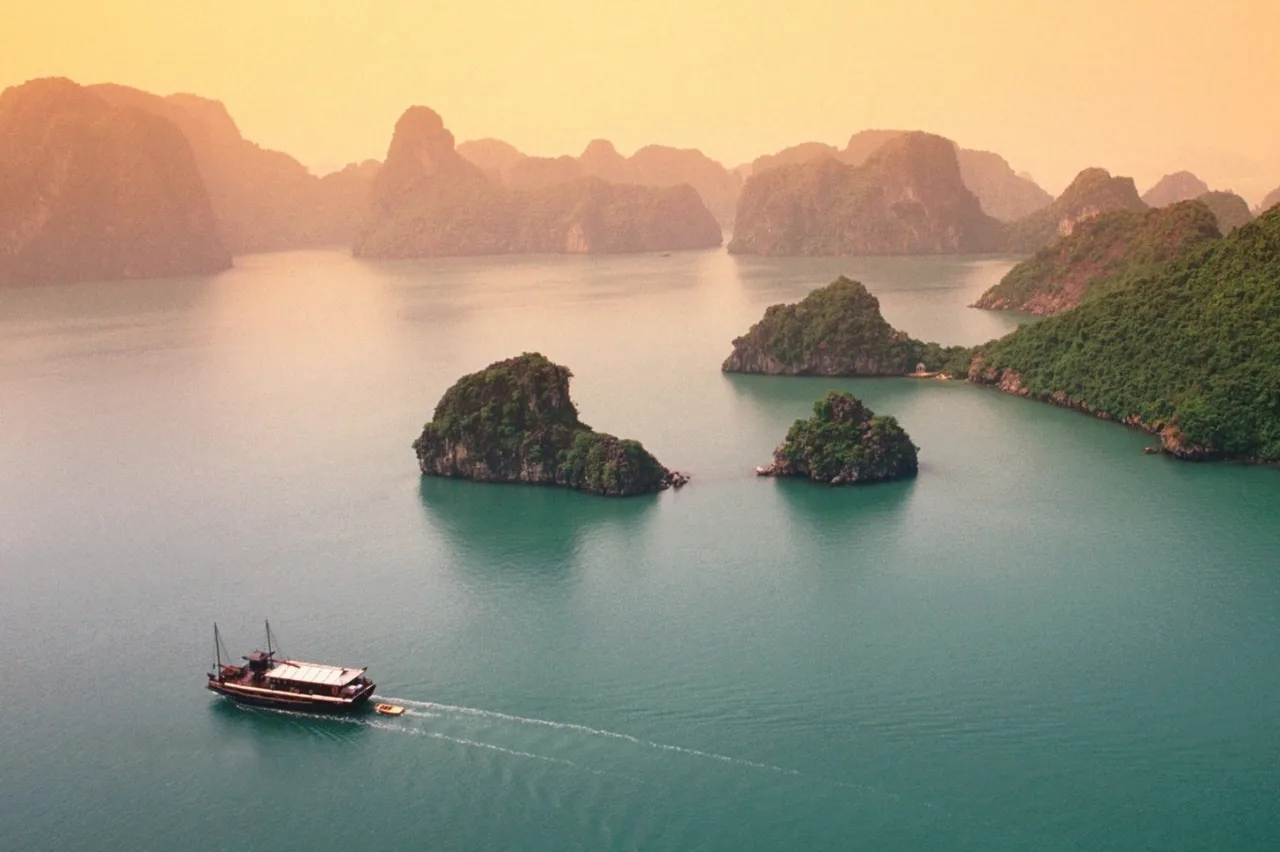The Capital Hanoi
Ha Noi, capital city of the Socialist Republic of Viet Nam, is the country’s political, cultural, scientific and technological center, and plays an important role in economy and international trade.

After expanding administrative boundaries in 2008, Ha Noi now covers an area of 334,470.02 hectares and has population of over 7 million. The city is listed among 17 capital cities with the biggest area worldwide. There are 30 administrative units at district and town level, and 577 communes, wards and towns.
Attracting foreign direct investment (FDI) has always been a key part of Vietnam’s external economic affairs. Vietnam already has many comparative advantages and a strong investment climate, but we are working hard to become even more appealing to foreign investors. We are doing so by vigorously renovating the business and investment climate, and by recognizing that the FDI sector is an integral part of the economy – essential to restructuring the economy and raising national competitiveness.
As of last month, there were more than 16,300 active FDI projects in Vietnam that have collectively pulled in a total of $238 billion. These investors came from 100 countries and territories, and many of them are some of the world’s leading multinational corporations. In 2013, FDI inflow exceeded $22 billion, an increase of more than 35% from 2012. The figures indicate that Vietnam has become a destination of choice for foreign investors.
So what explains this Vietnamese success story?
First, Vietnam has been securing socio-political stability, and is known to be one of the most dynamic economies. Economic growth between 1991 and 2010 averaged 7.5% each year and, despite the many difficulties the country faced between 2011 and 2013, GDP growth still rose by 5.6%. Several international forecasts suggest that this trend will continue in 2014-2015 and beyond.
Second, Vietnam is now in a period of golden population structure – 60% of its population are working age. It also has a favourable geographical location right at the heart of East Asia – home to a number of large and vibrant economies. Furthermore, the country is a market economy, a member of the WTO, and a party to multiple frameworks for international economic integration, including free trade agreements with partners both within and outside the region. In particular, the country is part of the Trans-Pacific Partnership negotiations. These factors all go some way to explaining why so many choose to invest in Vietnam – and should draw in more foreign investors.
Third, the Vietnamese government is committed to creating a fair and attractive business environment for foreign investors, and constantly improving its legal framework and institutions related to business and investment. The government has been working hard on restructuring the economy and its model for growth, as well as enhancing national competitiveness.
To add new chapters to this success story, the Vietnamese government is continuing to revitalize its business and investment climate. One way it is doing this is its work on three “strategic breakthroughs”: putting in place market economy institutions and a legal framework; building an advanced and integrated infrastructure, particularly transport; and developing a quality workforce. These should all be completed by 2020.
The government remains determined to fulfil its treaty obligations and promote the negotiation and conclusion of a new generation of free trade agreements. Vietnam views the success of FDI enterprises as its own success. As such, the government is committed to ensuring a stable socio-political environment, protecting the legitimate rights and interests of investors, and creating an enabling environment for FDI enterprises in the country.
In the medium and long term, Vietnam will continue in its efforts to attract and efficiently use FDI inflows to advance socio-economic development. The country will target “high quality” FDI inflows, focusing on FDI projects that use advanced and environmentally friendly technologies, and use natural resources in a sustainable way. It will also target projects with competitive products that could be part of the global production network and value chain.
International forecasts suggest that as the world economy recovers, FDI flows are returning to dynamic economies. Given the positive prospects for both global and regional economies, we are confident Vietnam will continue to find success in this area.
In 2016, although having many difficulties and challenges, the socio-economic situation of Vietnam showed the positive changes and achieved important results. Gross Domestic Product (GDP) in 2016 was estimated to increase by 6.21% from 2015, of which it increased by 5.48% in the first quarter; 5.78% in the second quarter; 6.56% in the third quarter; and 6.68% in the fourth quarter. Of the growth rate of the whole economy, the sector of agriculture, forestry and fishery went up by 1.36%, this was the lowest growth rate since 2011, contributed 0.22 percentage points to the general growth; the sector of industry and construction moved up by 7.57%, lower than the growth rate of 9.64% in the previous year, contributed 2.59 percentage points; the service sector raised by 6.98%, contributed 2.67 percentage points. Macro economy was stable; inflation was curbed; money market and banking activities had positive performance; interest rate and exchange rate were stable. Business environment was clearly improved; the number of newly-established enterprises and enterprises re-operated rose highly; attraction of international visitors reached 10 million visitors. Fields of labor, employment and social security were interested in implementation and achieved certain results.
Import & Export
Export value in 2015: USD162B (Electrical machinery& equipment, footwear, machinery including computers, textile and garments, wood products (furniture)
Top 5 export destinations: US, China, Japan, Korea, and Germany
Import value in 2015: USD165B (Electrical, electronic equipment, Machinery- nuclear reactors & boilers, Mineral fuels- oils- distillation products, Iron and steel, Plastics and articles thereof)
Top 5 import destinations: China, Korea, Japan, Taiwan, Thailand.
This year Vietnam posted tade deficit 1.2 billion dollar in The Government of Vietnam continues to show commitment to reforms. Vietnam’s 2011 – 2020 Socio-Economic Development Strategy (SEDS) – a 10 year strategy – highlights the need for structural reforms, environmental sustainability, social equity and emerging issues of macroeconomic stability. It defines three “breakthrough areas”: (i) promoting skills development, particularly for modern industry and innovation; (ii) improving market institutions, and (iii) further infrastructure development. The Socio-Economic Development Plan (SEDP) for 2016-2020, approved in April 2016, acknowledges the slow progress on certain policy priorities and emphasizes the need to accelerate reforms
VIETNAM ETHNIC COMMUNITY IN BRIEF
Vietnam is a multi-nationality country with 54 ethnic groups. The Kinh people account for 87% of the country’s population and mainly inhabit the Red River delta, the central coastal delta, the Mekong delta and major cities. The other 53 ethnic minority groups, totaling over 8 million people, are scattered over mountain areas (covering two-thirds of the country’s territory) spreading from the North to the South. However, a fundamental solidarity among ethnic groups has been established on top of this difference as a result of a century long cooperation on the soil of Vietnam. Right in the first century of the history, a mutual supplement in economic relationship between lowland people and mountainous people was formed. This solidarity had been unceasingly strengthened during wars of resistance for defending the country. Through the shared struggle for defending and building of the country and the mutual assistance for co-existence and development, a common community between the Viet people and other ethnic minority peoples had been established and continuously consolidated and developed. Nonetheless, an evident gap in the material and moral life has indeed still existed between peoples living in the deltas and those living in mountain areas as well as among ethnic minorities themselves. The Vietnamese government has worked out specific policies and special treatments in order to help mountainous people catching up with lowland people, and made great efforts to develop and preserve traditional cultural identities of each ethnic minority group. At present, the programs of providing iodized salt for remote villages, equipping village’s health care and hygienic station, fighting malaria, building free schools for ethnic minority children, settled agriculture and fixed residence, and projects of creating new writing scripts for minority peoples and studying and developing traditional culture of each ethnic minority group… have obtained satisfactory results.
VIETNAMESE CULTURE IN BRIEF
The culture of Vietnam is one of the oldest in Southeast Asia, with the ancient Bronze age Dong Son culture being widely considered one of its most important progenitors. Due to 1000 years of Chinese rule, Vietnam was heavily influenced by Chinese culture in terms of politics, government, Confucian social and moral ethics, and art. Following independence from China in the 10th century, Vietnam began a southward expansion that saw the annexation of territories formerly belonging to the Champa civilization (now Central Vietnam) and parts of the Khmer empire (modern southern Vietnam), which resulted in minor regional variances in Vietnam’s culture due to exposure to these different groups. During the French colonial period, Vietnamese culture absorbed various influences from the Europeans, including the spread of Catholicism and the adoption of the Latin alphabet. In the socialist era, the cultural life of Vietnam has been deeply influenced by government-controlled media and the cultural influences of socialist programs. For many decades, foreign cultural influences were shunned and emphasis placed on appreciating and sharing the culture of communist nations such as the Soviet Union, China, Cuba and others. Since the 1990s, Vietnam has seen a greater re-exposure to Asian, European and American culture and media.
Some elements generally considered to be characteristics of Vietnamese culture include ancestor veneration, respect for community and family values, handicrafts and manual labor, and devotion to study. Important symbols present in Vietnamese culture include dragons, turtles, lotuses and bamboo.
Super deals from October to December !!!
For the first time in the history of Love Vietnam, we offer free visa and fast track at the airport for customers who book private tours with our company at a reasonable price, which is why we launch this promotion in the period from October to December because these are the peak months, so all services will be higher than usual and to create opportunities for tourists to travel to Vietnam at reasonable prices. We offer this very good offer to our customers. Note that this offer does not apply to holidays and Christmas.
We are committed to this is the only promotion program and the first time in the history of the tourism industry in our company. Seize this opportunity and book a tour with us for an unforgettable trip in #Vietnam with us 🌾🇻🇳✈️🌧️
For more information about the program, please contact: ASHAQ Vietnam
98 To Ngoc Van, Tay Ho, Hanoi
Hotline: +84 398326010
Fanpage:
Website: https://ashaqvietnam.com/




